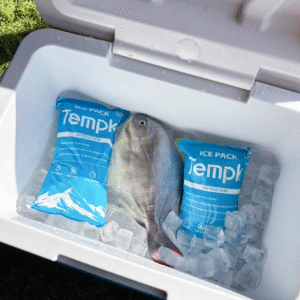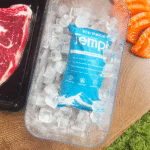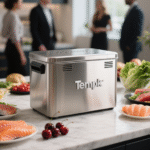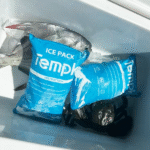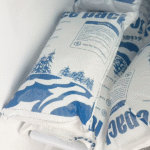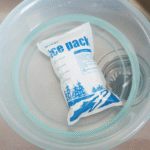Dry Ice Supplier or Ice Pack: How to Choose in 2025
Updated: October 11, 2025
Choosing a dry ice supplier or an ice pack strategy comes down to temperature, time, and compliance. Dry ice holds about –109.3 °F (–78.5 °C) and turns straight to gas, keeping parcels dry; ice packs maintain 35–45 °F for chilled loads. This guide shows you how to vet a dry ice supplier, size cooling correctly, and stay compliant—so your shipments arrive safe without overspending.
-
How do you vet a dry ice supplier for quality and reliability? (local production, forms, safety)
dry_ice_supplier_article
-
Dry ice supplier or ice pack—which fits your lane and product? (frozen vs. chilled, hybrid builds)
dry_ice_supplier_article
-
How much dry ice should you start with for each shipment? (fast estimator, tuning by data)
文章3-web
-
What labels and rules actually matter in 2025? (UN1845, PI 954, venting)
dry_ice_supplier_article
-
Which 2025 trends can lower cost and risk? (CO₂ capture, smart logging, reusables)
dry_ice_supplier_article
What does a reliable dry ice supplier guarantee in 2025?
Short answer: Fresh production, the right forms, and safety‑first guidance from your dry ice supplier cut loss and errors. Prioritize nearby production (fewer sublimation losses), frequent delivery, and options like pellets, nuggets, and blocks to match your pack‑outs. Ask for handling instructions and vented containers as part of the service.
dry_ice_supplier_article
Why it matters: Dry ice sublimates over time. A local, frequent‑run dry ice supplier helps you receive fresher product and less waste. Expect help choosing forms (pellets for fast pull‑down; blocks for long lanes) and practical packaging tips to maximize hold time and safety. Sustainability credentials—CO₂ capture and reusable packaging—are now a differentiator.
dry_ice_supplier_article
What should your dry ice supplier provide by default?
Purity, forms, delivery windows, and compliance support—these reduce excursions and rework. Many buyers look for ≥99.9% CO₂ purity, regional coverage, and flexible drop schedules; your dry ice supplier should also provide clear safety data and training materials.
Dry_Ice_Supplier_Ice_Pack_Tempk…
| Supplier Checklist | What to Ask | What Good Looks Like | Why It Helps You |
|---|---|---|---|
| Production cadence | Daily/on‑demand runs | Same‑/next‑day delivery | Fresher ice, less loss
dry_ice_supplier_article |
| Forms & sizes | Pellets, blocks, “rice” | Choice by lane length | Right form, right hold time
dry_ice_supplier_article |
| Purity & SDS | Food‑grade CO₂ docs | ≥99.9% CO₂, SDS shared | Consistent performance
Dry_Ice_Supplier_Ice_Pack_Tempk… |
| Safety & training | PPE, venting guidance | Pack SOPs and labels | Fewer incidents, faster pack‑out
dry_ice_supplier_article |
Practical tips you can use today
-
Pre‑chill shippers and product to lower the initial heat load.
dry_ice_supplier_article
-
Place dry ice on top of frozen goods so cold gas sinks through the payload.
dry_ice_supplier_article
-
Keep packages vented; never gas‑tight. Your dry ice supplier should reinforce this.
dry_ice_supplier_article
Real‑world case: A dessert brand swapped retail blocks for scheduled pellets + half‑blocks from a regional dry ice supplier. Result: fewer temperature excursions on 3‑day lanes and ~9% lower coolant cost by standardizing form factor.
文章3-web
Dry ice supplier or ice pack—which fits your product and lane?
Short answer: Use dry ice for fully frozen, multi‑day lanes; use ice packs for 2–8 °C, short‑haul parcels; combine both for hybrid control. Dry ice is colder and often lighter per unit of cooling; ice packs are reusable and simpler to handle.
dry_ice_supplier_article
More detail: Ice packs typically hold refrigerator‑like temperatures and are ideal for products that must not freeze. They’re budget‑friendly and safer to handle. Dry ice excels when you must keep goods frozen for days or ship where refrigeration is scarce. Many teams layer ice packs around sensitive items and place dry ice above for stable, frozen conditions.
dry_ice_supplier_article
Side‑by‑side comparison for quick decisions
| Factor | Dry Ice | Ice Pack | What it means for you |
|---|---|---|---|
| Operating temp | –109.3 °F (–78.5 °C) | 35–45 °F (2–7 °C) | Frozen vs. chilled selection
dry_ice_supplier_article |
| Typical duration | Several days when packed well | Often up to ~6 hours | Pick by lane length
dry_ice_supplier_article |
| Cost profile | Consumable, higher per ship | Reusable, lower unit cost | Balance budget & scale
dry_ice_supplier_article |
| Safety & rules | PPE + UN1845 + venting | Minimal restrictions | Plan training & labeling
dry_ice_supplier_article |
Field‑ready guidance
-
Frozen desserts, 2–3 days: dry ice blocks + pellet topper; verify vent path.
文章3-web
-
Fresh biologics, 2–8 °C: high‑quality ice packs; avoid dry ice freezing.
dry_ice_supplier_article
-
Mixed payloads: hybrid build with ice packs buffering and dry ice maintaining frozen zones.
dry_ice_supplier_article
How much dry ice do you actually need for each shipment?
Short answer: Start with 5–10 lb per 24 h for a well‑insulated parcel, then tune by data. For 10 lb of product over 24 h, ~5 lb dry ice is a common baseline; increase with longer lanes or poor insulation.
dry_ice_supplier_article
Why it works: Dry ice cooling comes from sublimation, not melting, so it often weighs less than the equivalent cooling from water‑based packs. Use blocks for longer lanes (slower loss), pellets for fast pull‑down in tight voids, and always allow gas to vent. Your dry ice supplier can help run sizing calculators for your routes.
dry_ice_supplier_article
Quick estimator (copy & adapt)
| Estimator Input | Typical Value | Tuning Tip | What it means for you |
|---|---|---|---|
| Transit days | 1–4 | Include sortation buffers | Prevent under‑packing |
| Insulation factor | 0.8–1.4 | Better R‑value → smaller factor | Right‑size cost |
| Pack geometry | Low voids best | Fill voids to slow convection | Longer hold time |
| Form choice | Blocks for long lanes | Pellets to fill gaps | Match to handling |
Pro tip: Pre‑chill containers and product. It’s a free “extra hour” of hold time that any dry ice supplier will recommend.
dry_ice_supplier_article
Safety & compliance: can your dry ice supplier keep you audit‑ready?
Bottom line: Mark UN1845, show net weight, apply Class 9, and keep packages vented. IATA PI 954 and carrier job aids mirror these rules; many airlines cap dry ice on passenger aircraft. Train teams on PPE and unpack in ventilated areas.
dry_ice_supplier_article
Details that prevent delays: Use vented lids or relief paths, never seal dry ice in airtight bags, and include handling guidance in SOPs. A competent dry ice supplier provides SDS, labeling guidance, and refresher training for pack‑out teams.
dry_ice_supplier_article
Compliance checklist you can paste into your SOP
-
UN1845 + proper shipping name on outer box; net kg displayed.
dry_ice_supplier_article
-
Class 9 hazard label applied clearly; don’t cover or fold.
dry_ice_supplier_article
-
Venting required; never gas‑tight.
dry_ice_supplier_article
-
Passenger aircraft limits exist; many services impose low per‑package caps.
dry_ice_supplier_article
2025 cold chain developments and trends
Trend overview: CO₂ capture now underpins many dry ice plants, strengthening supply and sustainability claims. Smart temperature loggers and connected labels are standard in shipper kits, while reusable insulation and eco‑friendly gels reduce waste. Expect broader hybrid builds and subscription supply models from your dry ice supplier.
dry_ice_supplier_article
Latest at a glance
-
CO₂ capture → dry ice: lower footprint narratives and more stable sourcing.
dry_ice_supplier_article
-
IoT tracking: real‑time alerts cut spoilage and speed root‑cause analysis.
dry_ice_supplier_article
-
Reusable shippers: better insulation, less refrigerant, lower lifetime cost.
dry_ice_supplier_article
Market insight: E‑commerce and personalized medicine are extending frozen lanes and raising expectations for compliance literacy from every dry ice supplier you consider. Hybrid systems mixing dry ice and high‑performance packs are gaining share.
dry_ice_supplier_article
Hands‑on tips and quick wins
-
Scenario—2‑day frozen desserts: Use blocks with a small pellet topper; log the first two runs and tune weight.
文章3-web
-
Scenario—same‑day groceries (chilled): Select high‑quality ice packs; avoid dry ice to prevent freezing.
dry_ice_supplier_article
-
Scenario—4‑day national lane: Choose block‑heavy builds from your dry ice supplier and minimize headspace.
dry_ice_supplier_article
Field example: Switching to a local dry ice supplier with daily production cut sublimation losses in transit and improved Monday‑morning fill rate for urgent orders.
dry_ice_supplier_article
Frequently Asked Questions
Q1: How cold is dry ice and why does it outperform water ice?
Dry ice sits near –109.3 °F (–78.5 °C) and sublimates—no meltwater—so cooling stays dry and consistent.
dry_ice_supplier_article
Q2: Can I combine dry ice and ice packs in one box?
Yes. Use ice packs to buffer sensitive items and dry ice above to hold frozen conditions for longer lanes.
dry_ice_supplier_article
Q3: What starting amount should I try if I don’t have data yet?
Plan 5–10 lb per 24 h for a typical insulated parcel, then adjust by lane data and insulation.
文章3-web
Q4: What labeling is required for air shipments?
Mark UN1845 “Dry ice/Carbon dioxide, solid,” show net kg, apply Class 9, and ensure venting as required by PI 954.
dry_ice_supplier_article
Q5: What purity should I expect from a dry ice supplier?
Look for documented, food‑grade CO₂—many buyers target ≥99.9% purity from their dry ice supplier.
Dry_Ice_Supplier_Ice_Pack_Tempk…
Summary and recommendations
Key points: Pick a dry ice supplier with local production, the right forms, and strong safety/compliance support. Use dry ice for frozen, multi‑day lanes; ice packs for 2–8 °C or short hauls; try hybrid builds where it helps. Start at 5–10 lb per 24 h and tune with loggers. Keep packages vented and labeled (UN1845, net kg, Class 9).
Next steps (CTA):
-
Audit your SKUs by frozen vs. chilled and transit time.
-
Ask a dry ice supplier for form options and delivery windows.
-
Run two test shipments with data loggers; adjust weights ±20%.
-
Publish a one‑page pack‑out SOP and train your team.
dry_ice_supplier_article
About Tempk
We engineer practical cold‑chain builds that combine dry ice and advanced packs. Our team supports sizing, labeling, and pack‑out SOPs, and we prioritize sustainability through smart sensors and reusable insulation. If you need a lane‑specific recommendation or an SOP template, we’re ready to help.






